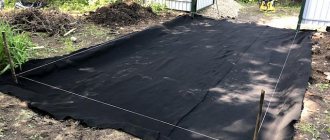The garden rose is a well-known, heat-loving sissy. Particularly fastidious are new, recently bred varieties and hybrids, distinguished by their unusual flower colors and outstanding decorative properties. In order not to lose roses, it is important to think in advance about how to cover them in the fall for the winter.
Each gardener determines the method and, most importantly, the beginning of the work independently, guided by the varietal characteristics of the existing rose bushes, the peculiarities of local climatic conditions and the long-term weather forecast. We are only providing approximate information to rely on.
How to cover climbing roses for the winter
When preparing a climbing rose for winter, you need to be extremely careful and attentive so as not to damage the vines. Initially, you need to carry out the following work:
- It is important to pinch all shoots.
- The lashes need to be removed from the supports, and the petioles and leaves removed from the bush.
- Sprinkle damage, cracks and wounds with charcoal.
Important! To prevent the lashes from falling apart, they must be firmly twisted into one bundle and tied.
Experienced breeders practice two main methods of covering climbing roses for the winter:
- The first involves mulching the base of the plant. To do this, you need to lay the needles, sprinkle them with sand and cover them with spruce branches. One by one, the lashes must be removed from the supports and placed on the spruce branches. After wintering, you need to open the plant gradually, first the branches, and then everything else.
- The second one requires more effort. On a warm sunny day, you need to twist all the stems into one bundle. The heaviest and thickest ones can simply be bent to the ground and secured with a wooden frame, but the shoots should not touch the ground. You need to build a spunbond canopy over the branches so that all the edges and ends are covered.
What to cover with?
For roses, it is important to choose the right covering material. It must be durable and reliable: withstand temperature changes and gusts of wind, be waterproof and dense.
Suitable for the bottom layer of cover:
- craft;
- sackcloth;
- sawdust;
- hay;
- spruce or pine branches (spruce branches are usually used in regions with frosty but little snow winters).
For the top layer, additional moisture-proof material is usually used:
- non-woven thick spunbond (agrotextile) width ≈ 0.5 m;
- geotextiles;
- roofing felt;
- reinforcing fabric;
- thick cardboard (you can make caps out of it or cover the roses with ordinary store boxes);
- thin plywood;
- lutrasil is pulled onto the frame.
The most common mistakes rose growers make when choosing covering material for roses for the winter:
- Use of polyethylene film. It has two significant drawbacks: first, it will constantly be blown away by the wind; second, it is impossible to fix its edges to the ground, since air ventilation inside the shelter will be disrupted and the plants will rot.
- Use as a covering material for the lower layer of old foliage. It should be collected and burned. This is the main source of fungal infections, pests and preliminaries.
- Construction of embankments of sawdust, which absorb moisture well and create an unfavorable climate inside the shelter.
Today, the most popular are synthetic covering materials created using innovative developments. They are characterized by maximum strength and are ideal for protecting roses from frost. These are geotextiles, spunbond and lutrasil.
How to cover standard roses for the winter
The main difference between preparing standard roses for winter is that they practically do not need to be pruned. A little sanitary pruning of leaves and dead shoots is enough. Shelter features:
- If we are talking about young plants, then they need to be bent to the ground and secured with staples. In this case, the base of the flower must be covered with sand, dry leaves or pine needles. You need to lay spruce branches on the bottom and top of the crown. After this, the entire plant is covered with spunbond.
- It is forbidden to bend adult standard rose plants, as the woody stems may break. The best option for covering a standard rose is a structure around a wire frame, or you can wrap the bush with roofing material. You need to pour sawdust, dry leaves or pine needles into this frame. A cover made of fabric or other covering material is placed on top of the entire structure. The edges must be tied with twine to prevent the wind from opening the covering material.
If your region is soft and without severe frosts, you can get by by wrapping only the crown of the rose with burlap or spunbond.
Take care of ventilation
Often, conscientious but inexperienced gardeners have roses under cover that rot and die from excess humidity at relatively high temperatures. This is facilitated by:
- construction of sealed, water- and airtight shelters;
- lack of ventilation during prolonged thaws or spring warming;
- covering roses too early;
- covering bushes from which leaves have not been removed.
As a rule, this problem is most acute in those regions where the climate is unstable, and in winter frosts are interspersed with severe thaws. At this time, condensation forms under shelters made of water- and air-tight materials, causing mold and rot. If it is not possible to ventilate winter protective structures as needed, you should choose other shelter options.
However, breathable materials in such a situation are also not a panacea: for example, popular lutrasil or spunbond usually get wet during a thaw, and then, when the cold comes again, they freeze, forming a dense ice crust. The breathing of plants under it becomes difficult, and they also often die.
If such temperature changes in winter are typical for your area, and you cannot provide the necessary care for roses in the event of a thaw, give preference to frost-resistant varieties that do not require shelter and winter well under snow - for example, Canadian roses or floribunda roses, which are more resistant to frost.
How to cover park roses for the winter
This variety of roses is winter-hardy and is not afraid of frost. Nevertheless, in order to protect against the negative effects of low temperatures on young shoots, you need to carry out simple manipulations. First of all, it is necessary to trim off diseased and old shoots. This will improve flowering and rooting. This way you will remove sources of plant infections.
Before the first frost, park rose bushes are hilled using compost or peat. Sometimes gardeners wrap the top part with covering material or spruce branches. Another option for this variety is to install wooden boxes along the bushes.
The initial stage of preparing a rose for wintering is a gradual transition to a state of rest
In order for the plant to better prepare for the dormant period, it is necessary to stop performing those actions that stimulate it to grow:
- Under no circumstances should fertilizing with nitrogen fertilizers be allowed, as they promote the growth of green mass; you can feed with potassium and phosphorus fertilizers or their natural equivalents (wood ash);
- remove weeds around the rose bush, but do not cultivate the soil, as this also pushes the plant to develop;
- gradually reduce watering; if there is a large amount of precipitation, you can make drainage ditches or even a canopy.
This work is carried out in warm temperate climates from the beginning of September, in regions with shorter summers - from mid-August.
How to cover hybrid tea roses for the winter
This variety begins to be prepared for winter at the end of summer, beginning of autumn. There are two important stages:
- First of all, this is the application of potassium-phosphorus fertilizers, which will remove excess nitrogen from the soil, as well as reduce the activity of vegetation in the above-ground part and strengthen the root system of the bush.
- The main step is pruning. It is easier to cover cut branches, and the plant does not suffer. Before you begin this process, you need to do the following:
- the pruning tool is disinfected with potassium permanganate, this will protect the plant from infection;
- on the shoots you need to find a bud from the outside. It is above this that the cut is made. In this case, the pruning shears are held at an angle of 450. It is not recommended to cut straightly, since juice will accumulate and, as a result, rot from moisture;
- it is important to cut off all dried, damaged and weak shoots;
- All sections are treated with an antiseptic. This will protect the plant from dangerous microorganisms. Ash or tree resin can serve as an antiseptic.
Having completed the above procedures, the hybrid tea rose bushes need to be hilled to a height of 20-30 centimeters. The upper shoots are covered with spruce branches and sponbond. This will provide the bush with air and protect it from ice and wind.
Shelter materials
Perhaps the most successful option is modern non-woven covering materials (lutrasil, spunbond, etc.). Depending on the size and shape of your rose garden, you can use a large canvas, securing it to a specially installed frame, or ready-made covers designed for individual bushes. Choose material of maximum density; It is recommended to cover thin ones in 2-3 layers.
The frame for the shelter is constructed from greenhouse arcs, wooden slats, metal reinforcement or any other available materials. The main thing to consider is that the frame must be strong enough to withstand the weight of falling snow. In this regard, cone-shaped “huts” turn out to be more practical than tunnels made of arcs, which often break after heavy snowfalls and therefore require additional supports.
The advantage of non-woven covering materials is their ability to allow air to pass through and not prevent the evaporation of excess moisture. It is not advisable to install airtight shelters - made of polyethylene film, roofing felt, polystyrene foam and other similar materials: the plants under them often damp out.
Actually, it is damping off, and not freezing, that is the most common cause of death of rose bushes in winter. If moisture accumulates under the shelter, air exchange is difficult, and the temperature rises - a favorable environment is created for the development of mold and rot, and the plants literally suffocate. As a result, in the spring the gardener discovers blackened bushes with no signs of life.
Another popular and affordable material for winter covering of roses is spruce branches (branches of coniferous trees). It helps create an additional layer of air around the bush, retains snow (if used as the main covering material) and repels rodents.
However, it should be remembered that you can only harvest spruce branches from fallen trees (for example, in logging areas) - you cannot cut branches from living trees. And not every summer resident has a coniferous forest within walking distance.
Replacing spruce branches with brushwood, dry plant stems and other similar materials should be done with great care, since they, unlike spruce branches, are susceptible to rotting and are very attractive to mice, which willingly build homes in such shelters.
How to cover rose cuttings for the winter
We have already figured out the methods and features of covering roses, but what to do with the cuttings, how to properly preserve them until spring? Experienced gardeners carry out cuttings of roses in the fall. The thickness of such shoots should be the diameter of a pencil. They need to be cut with a sharp tool and can be stored in several ways :
- for harvested cuttings you need to dig a small hole about 15 centimeters deep. Place cotton fabric on its bottom. Place the shoots on the bottom with a short distance from each other. After this, they are covered with cloth and buried;
- Treat the cuttings with sphagnum moss and then wrap them in phytosporin. Place the prepared material in a plastic bag. In this state they can be stored in a cellar or even a refrigerator;
- Rose cuttings can even be stored on the balcony. To do this, take a plastic bucket, fill in a small layer of expanded clay, then soil and perlite. On sections, treat the prepared material with a growth stimulator. Moisten all this, and place the cuttings in a bucket, the ends should be in the substrate. To keep the plants from freezing, wrap the bucket in a blanket. The bucket should be stored in the warmest, most illuminated and ventilated area of the balcony. The cuttings must be ventilated periodically.
What structures are used to cover plants?
Using a wooden frame to cover roses
Usually, various types of frames are used to cover these perennial shrubs - iron rods, large plastic flowerpots, wicker baskets, boards, wooden pallets. Such structures are covered on top with non-woven fabric, film, spruce branches, straw or dry leaves.
How to cover roses for the winter in different regions
Central Russia and Moscow region
Covering roses in this region should begin in early November. Polyanthus, hybrid tea and floribuna need to be insulated with spruce branches, and the shoots should be bent to the ground using staples. At the base of the bush, you need to hill up with peat, humus or compost to a height of up to 40 centimeters. You can build a canopy over the bush or cover the plant with dry leaves or spruce branches. It is not always possible to bend the shoots above the ground; in this case, you need to build metal or wooden frames and cover them with a cover.
Leningrad region
The climatic conditions of this region are characterized by low temperatures and high humidity. Because of this, you need to start preparing plants for wintering earlier than in the middle zone. The main set of techniques is practically no different from the previous version. The main thing is to cover the rose to temperatures below -10 °C.
Ural
In the Urals, roses need to be prepared for wintering at the end of October down to -5 ºC. It would be great if by this time there is already snow cover, which will partially protect the plant from low temperatures. It is better to prune the bushes and hill them using peat in mid-October.
Shortly pruned bushes can be protected with wooden boxes and covered with cloth. For tall plants and harsh winters, you will need to build a hut over the bush. This will require several boards and covering material. This is an excellent option because the flowers do not rot and are perfectly protected from frost. If you have a large flower bed, it is worth building a full-fledged frame over the plants.
Siberia
Covering is a great way to protect yourself, but it can also cause plants to dry out. To avoid this, do not cover the roses too early. It is no secret that even in early November there can be warm days in Siberia. Because of this, you need to focus on the weather forecast.
Small shoots can be covered with plastic bottles with a cutout in the bottom. In this case, you need to fill the bottom of the bottle with peat or leaves through the neck. It is important to remember to remove the cap from the bottle so that the plant does not dry out.
Tall plants must be trimmed and hilled to a height of 30-40 centimeters. You will also need to backfill with dry leaves.
Southern regions
As a rule, gardeners in these regions of Russia do not use additional methods for covering roses, since temperatures here rarely fall below -15 °C. It is enough to carefully trim the shoots and hill up.
Temperature
The most appropriate time for sheltering is when the cold weather has already persisted constantly (at least 5-7 days), and according to weather forecasters, no warming is expected in the near future. The soil should freeze slightly, form a hard crust, and not thaw even in the daytime under the sun's rays.
If the thermometer stays stably around -2...-4 °C during the day, and drops to -5...-6 °C at night, then it’s time to insulate the roses. Even cold temperatures down to -15 °C are not scary for uncovered bushes, so there is no need to rush too much. The main thing is that the frosts are not too long.
Much more dangerous are sudden temperature changes, when during daylight hours the sun still warms well, but with the onset of darkness it seriously freezes. Prematurely covered plants confuse the seasons and begin a new growing cycle.
Many modern varietal and hybrid forms of roses cannot themselves determine when it is time for them to fall asleep, going into a state of winter dormancy. The gardener’s task is to help the bushes stop in time, stop developing and flowering, and also go to bed safely.
Second stage: protecting the rose from the development of diseases under the covering material
Any rose shelter design cannot completely guarantee the absence of at least slight overheating. And increased temperature and humidity promote the development of fungal diseases. Therefore, it is necessary to take care of prevention:
- the source of infection is leaves, especially the lower ones; they must be carefully cut; For roses with long branches, removal of leaves is carried out in several stages, starting from the lower ones;
- young shoots must be removed, since they will not be able to survive the winter, and if they die, they will become a source of infection;
- the bush and the ground around it are sprayed with a fungicide: Bordeaux mixture or a three percent solution of copper sulfate.
Pruning of leaves and spraying is carried out before hilling the rose bush for the winter, when the first frosts have just begun.











